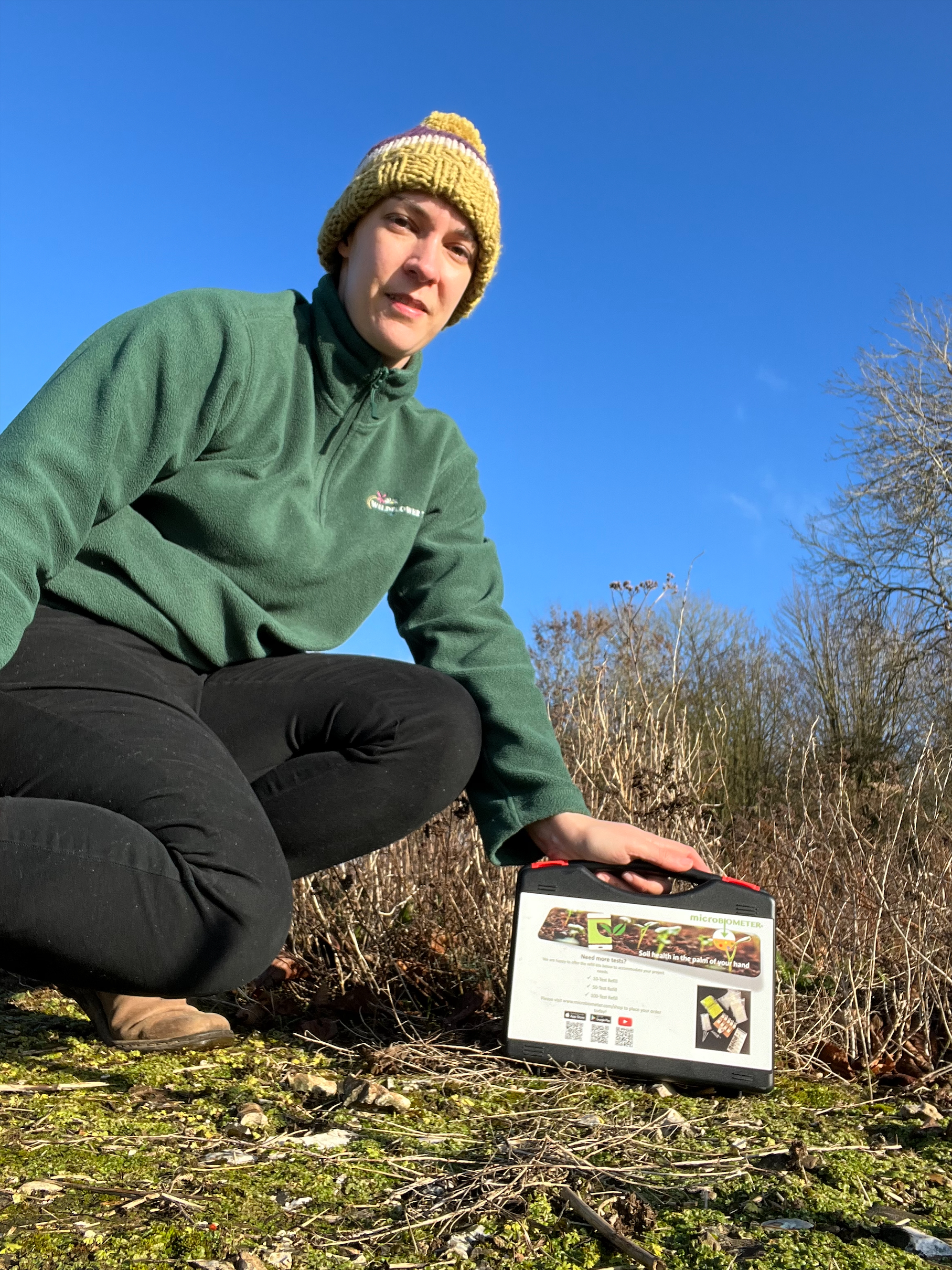
Working with soils a fair bit, it being the substrate into which their products are grown, they are interested in understanding the relationship between plants and soil. This involves investigating things such as soil structure, nutrient content, and more recently microbial content, at their R&D testing facilities in Hampshire.
They know that microbe-rich soil is beneficial for plant health. However, is there a relationship operating in the other direction? Does having a healthy plant population, or a more diverse plant population like the kinds of habitats they are trying to create with their products, influence the soil community or the type and scale of microbial activity in the soil?
To investigate this, they used a microBIOMETER® kit to conduct a study into the difference in microbial biomass of soils under meadows compared to lawns.
The results suggested that increased species richness above ground supports a larger amount of microbial life in the soil below. The meadow areas they tested, where there was around 14 species per m2 on average, had 42% higher microbial biomass than the lawns, which consisted of only a handful of species, and a 60% increase in the amount of fungi was also seen. Microbial biomass was therefore found to be positively correlated with species richness. So, they can demonstrate that there is some kind of positive interaction between the species richness of the planting scheme and the life in the soil below. And this corroborates evidence from a number of similar studies which have shown positive relationships between plant species richness and various soil factors.
This is very interesting research which leads them to believe that you should be able to improve the health of your soil just by increasing the diversity of your plants. Because they know that the more microbes and fungi there are, the more ecosystem services the soil will be providing. There’s more work to be done here to investigate this relationship, but just from this brief study they have found that the soil-plant interaction is much more complex than they were giving it credit for, and the benefits of biodiverse planting schemes like wildflower spaces are also more myriad than they imagined.
Previously they had focused on the importance of wildflower reintroduction for improving aboveground biodiversity, in the form of habitat for insects and birds for example. But they are just beginning to understand how important this habitat is for its relationship with the soil as well. It is their hope that research like this will continue and eventually feed into recommendations like Biodiversity Net Gain (BNG) in the UK, and the many benefits of improving soil health through soil organisms.

